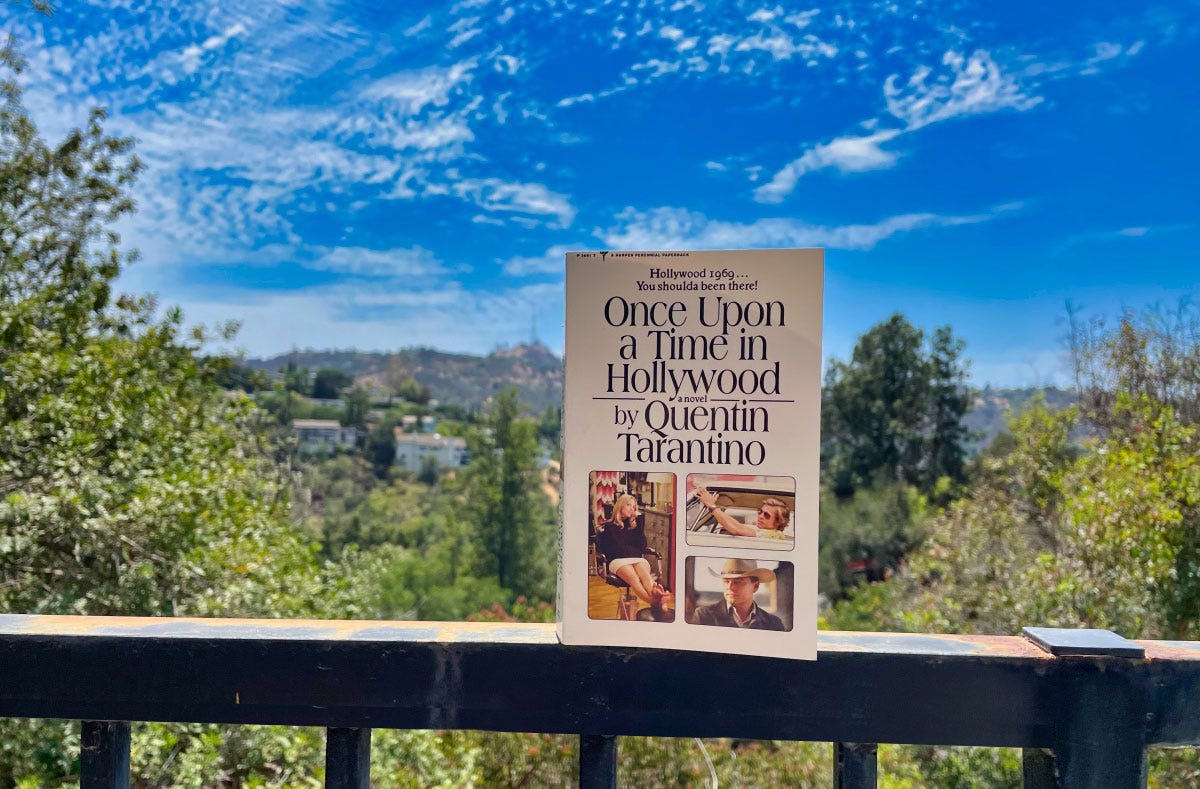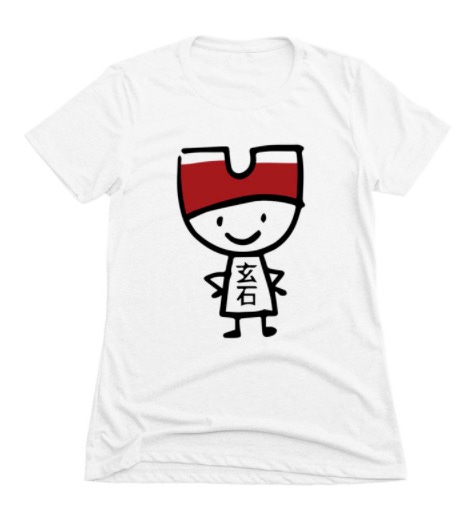The Magnet 38: How to see impossible colors
Plus: ginger juice, Tarantino paperback, occult fonts, and The Game of Life

When I read Edgar Rice Burroughs’ A Princess of Mars as a kid, I was intrigued by the description of a jewel that shined with two colors unknown to humans:
Then a door opened at the far side of the chamber and a strange, dried up, little mummy of a man came toward me. He wore but a single article of clothing or adornment, a small collar of gold from which depended upon his chest a great ornament as large as a dinner plate set solid with huge diamonds, except for the exact center which was occupied by a strange stone, an inch in diameter, that scintillated nine different and distinct rays; the seven colors of our earthly prism and two beautiful rays which, to me, were new and nameless. I cannot describe them any more than you could describe red to a blind man. I only know that they were beautiful in the extreme.
I tried to visualize even one “new and nameless” color, but of course, I couldn’t.
This week, I finally saw impossible colors, thanks to a Depths of Wikipedia Instagram post. The Wikipedia entry describes “colors that do not appear in ordinary visual functioning,” and it has exercises to help you see stygian colors (“these are simultaneously dark and impossibly saturated”), self-luminous colors (“these mimic the effect of glowing material, even when viewed on a medium such as paper”), hyperbolic colors (“these are impossibly highly saturated”) and colors not in the color space like "redgreen" or "yellowblue."
TASTY THINGS
Trader Joe’s 100% Ginger Juice Drink Mix
This is my new favorite drink. It’s called “100% Ginger Juice Drink Mix” and it’s packaged by Trader Joe’s (if you don’t live near a TJs you can buy it from resellers on Amazon or eBay). Regular ginger tea is shredded and dried ginger, but this one is made by pressing fresh ginger roots to extract the juice. After that, the juice is spray-dried (watch this 5-minute video that explains what spray drying is) into a powder.
There are seven packets of powder in each box. It dissolves easily in hot or cold water. The only ingredient is ginger juice powder, no sweeteners or anything else. The flavor is strong and peppery, like a ginger chew without the sugar. The first couple of weeks I just used a half pack with about 10 oz of water, but now that I'm accustomed to it, I use a full pack with about 12 oz of water. I drink one cup at 10 a.m. and another at 2 p.m. It's the perfect non-caffeinated pick-me-up. I want to try it in cooking, too.
Over at r/traderjoes, redditors are raving about this ginger powder. One person wrote, “I am obsessed with this product and have around 30 boxes in my pantry because I’m panicked TJ’s has a habit of killing off my favorites.” I bought just 3 boxes on my last visit. Maybe I should stock up!
NOVELIZATIONS
Once Upon a Time in Hollywood, by Quentin Tarantino
My wife, daughters, and I saw Once Upon a Time in Hollywood at the Arclight Theatre in Hollywood on the day it came out in 2018. All of us are Tarantino fans, and we loved the movie. It takes place in 1969, but it’s not meant to portray the era accurately. It’s Tarantino’s storybook homage to the Hollywood of his dreams (hence the film’s title). A host of references from the decade are found throughout the film, from the 93 KHJ radio sounds of the Boss era to the Playboy Mansion and Charles Manson’s grubby cultists.
The film has several intertwining stories that expose the culture shock of the time. The main thread is about fading TV actor Rick Dalton (Leonardo DiCaprio) and his stunt double Cliff Booth (Brad Pitt). For different reasons, both men are having trouble finding the work they built their careers on. In a time when society is changing, Dalton and Booth, more accustomed to old-fashioned Hollywood Westerns and war movies, are finding it difficult to fit in with the hippie movement. On the other hand, Roman Polansky (Rafal Zawierucha) and Sharon Tate (Margot Robbie) are shining stars of the groovy mod scene. Dalton and Booth’s lives are also affected by the Manson family, terrifying symbols of the new culture that’s destroying their worlds.
Once Upon a Time in Hollywood runs for two hours and forty minutes, and I wanted it to keep going. Fortunately for me, Tarantino wrote a novelization that’s like an eight-hour version of the movie. It has more of the main characters' inner lives and many more deep-geek digressions about 1960s films and television. Tarantino uses the characters as a way to talk about a period in Hollywood that had a profound influence on his work, but I didn’t mind. I found it fascinating. The novel’s plot veers in a few places from the book (and the ending is different), making it even more fun to read.
The novel’s cover design looks like a paperback from 1969, too—escape literature at its best.
DESIGN
Typefaces of the occult
John Coulthart, an artist and designer, has a terrific post on his website that showcases his favorite typefaces displayed on occult-themed book and magazine covers. The article provides many examples. One of my favorite typefaces is Hermann Ihlenburg's Ringlet typeface from 1882.
(I learned about this from my friend Sean Bonner’s excellent newsletter, Just Another Crowd.)
CELLULAR AUTOMATA
Patterns in The Game of Life

British mathematician John Horton Conway created The Game of Life in 1970. It’s played on a grid of squares of any size. A square (or “cell”) is considered “alive” if it’s black and “dead” if it’s white. Once you’ve filled in some squares, take a turn by applying the following four rules:
Any live cell with fewer than two live neighbors dies (referred to as underpopulation or exposure).
Any live cell with more than three live neighbors dies (referred to as overpopulation or overcrowding).
Any live cell with two or three live neighbors lives, unchanged, to the next generation.
Any dead cell with exactly three live neighbors will come to life.
Even though it sounds simplistic, after several turns, complex shapes sometimes appear that pulse, grow, and walk across the grid. When I watch The Game Life run, I feel like I'm watching a living creature or a colony of creatures. Try it yourself by using one of several excellent Java-based Game of Life engines on the Internet, such as this one.
Despite The Game of Life being over 50 years old, people are still discovering surprising new things about it. Ten of thousands of interesting patterns have been identified. Something is fascinating about seeding the grid with a random arrangement of living cells to see what patterns emerge and how long the simulation runs before it dies.
The Game of Life is called a cellular automaton because it is made up of cells (in this case, pixels) that change based on rules involving their internal states (e.g., alive or dead, their color, energy state, and so on) and the state of their neighbors.
The Game of Life, like many cellular automata, is a zero-player game. In other words, players cannot change the outcome of the game. The player can't win or lose. The simulation just moves forward and keeps changing based on the rules.
If you want to experiment with other kinds of cellular automata, check out Rudy Rucker and John Walker’s CelLab, an online lab with a good introduction to cellular automata.
CLOTHES
The Magnet mascot shirts
I’m selling Magnet mascot shirts in various styles. To keep the shirts mysterious, there are no other markings on them other than the mascot image.







